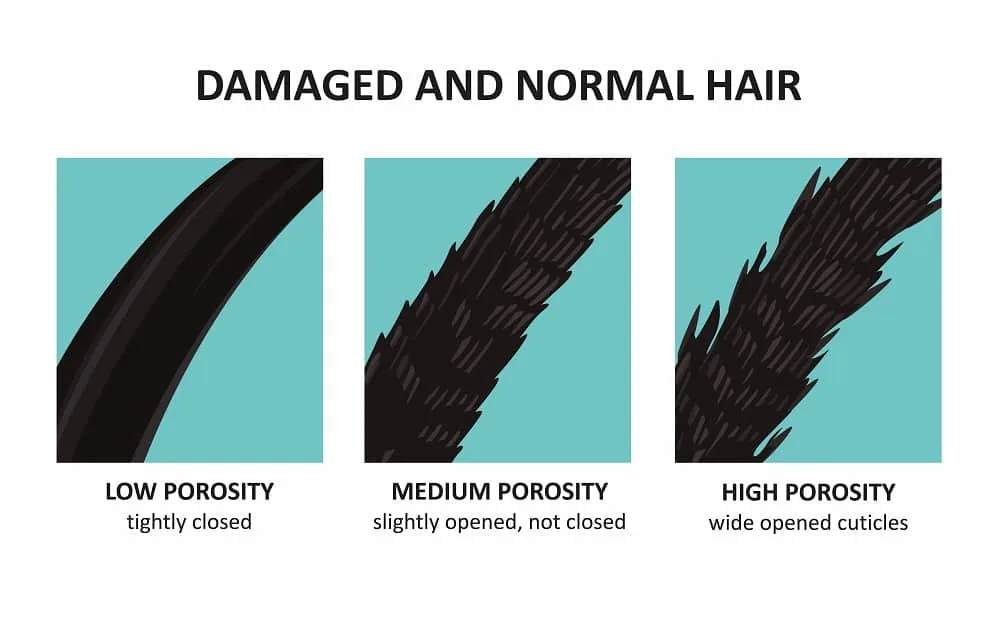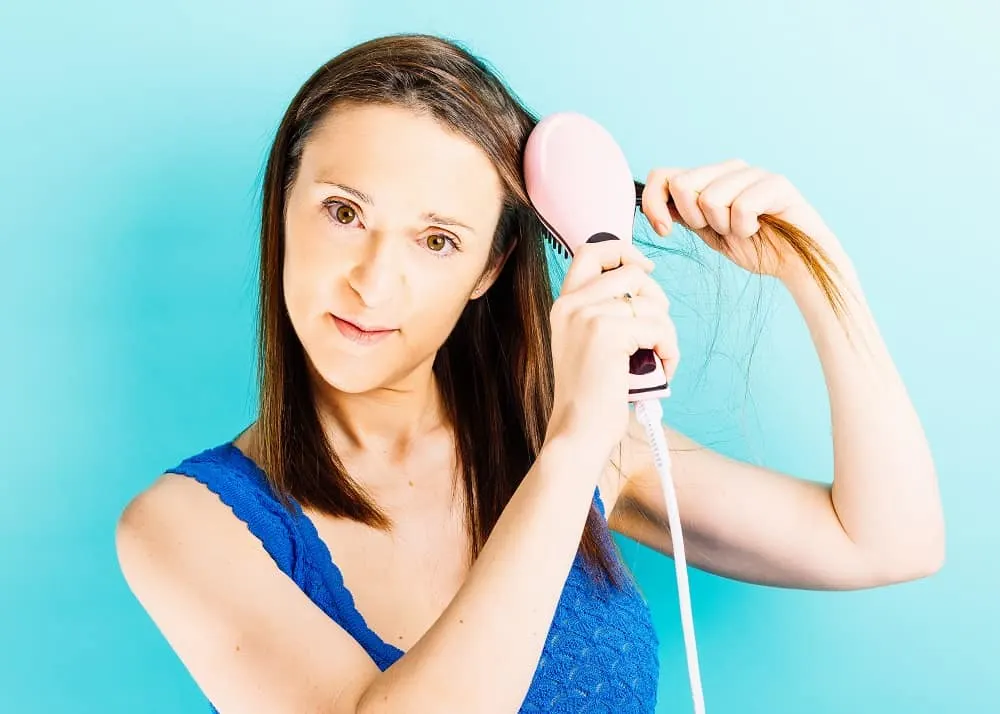Opening the hair cuticles for color is a necessary procedure when dyeing your mane. You might think that ammonia is the only way to obtain this effect, but heat is also well known for achieving an open cuticle.
Some hair dyes have clear instructions that mention covering your hair after adding the color to raise the temperature. Then, the dye penetrates your hair, and you get a long-lasting shade. Also, a steamer can be a great source of heat when you need to change your hair color.
On the other hand, cold water will close hair cuticles after coloring.
To better understand how hair threads work and how to open and seal the hair cuticles for coloring, read the article below.
How to Open Hair Cuticle?

First of all, if you love getting new hairstyles now and then, it is important to know the science behind hair dyeing and hair.
Also, this will help you maintain your hair healthy and shiny, even if you tend to apply hair dye and other coloring chemicals.
Each hair strand has smallscale structures that look like shingles. This outer covering is known as cuticles. If you have never applied hair dye on your mane, your hair is smooth, looks healthy, and silky.
That happens because these cuticles overlap. The overlapping cuticles reflect light from the environment giving your hair a shiny appearance.
Think about the aspect of a pinecone because your hair strands look just the same. When you dye your hair and hope for permanent color, you need to lift these ridges and allow the dye to penetrate into the cortex; the second layer of your hair strand.
Ammonia is a known chemical that’s known to harm your hair. This product lifts the cuticles and may damage your hair, especially if you constantly use it.
Let’s say you are a brunette and want to switch to a blonde color. In this case, you will need a developer. This product will remove your natural hair pigment and allow you to replace it with the color you want.
These products have certain intensity levels, so if you are a brunette who wants to switch sides and go to the blonde team, you’ll need very effective products.
Also, you must really avoid doing this procedure at home because it can go very wrong. A professional colorist will know how to apply ammonia and the developer so you get less damage and won’t end up with unwanted orange on blonde hair.
If you wonder what will open the hair cuticles, ammonia is one of the best. But if you want less damage, we recommend you try other hair care products that do not harm your hair in such a manner.
The purpose of the cuticle is to protect the cortex and maintain its thickness and health. So after coloring your hair, you need to use the right products to seal it back.
Depending on the type of hair you have (low or high porosity, texture), you can determine how your cuticles function.

The moisture is absorbed quickly but is not retained for high porosity hair. This translates into damaged hair.
In addition, your cuticles have too many holes made by the constant usage of harsh chemicals and heat. You might need to give your hair a break before changing your color again or find a hairstyle that doesn’t require daily styling.
If you have low porosity hair, your hair does not absorb moisture. Argan oil is perfect for both skin and hair and can be used to moisturize such threads.
After coloring your mane, make sure you apply conditioners based on argan, jojoba, and grapeseed oil (lightweight products based on water) to seal the cuticle and make your hair retain moisture.
As we mentioned before, some types of hair have different cuticle arrangements. For straight hair, the cuticle is “hugging” the cortex, and the hair is shinier and with a healthy look.
However, things are different when we’re talking about curly hair because the cuticles are raised. This causes curly frizzy hair and tangles; therefore, your hair is damaged easily.
How to Close Hair Cuticle?

You need products that neutralize the PH and keep the moisture in to seal the hair properly. Keeping the cuticle sealed prevents the color from getting out and will remain on your hair longer.
When hair feels smooth and shiny, the cuticle is closed, going in the right direction, and the moisture is kept inside.
So, every time you wash your head, make sure you use conditioner and nourishing masks. Also, applying deep conditioners once a week will certainly improve the aspect of your hair.
But unfortunately, because all that styling and dyeing harm your ends, it is crucial to protect them even more.
The last 3 inches are critical; otherwise, you will see that unwanted and awful damage and breakage. We all know how horrible those tips can look, and you certainly want to avoid that!
Also, if you are dyeing your hair at home using box color, you will notice that each package comes with a conditioner. It is so crucial to use it because it will close the cuticle.
Besides conditioner, other natural ingredients and practices can close the ridges. Washing hair in colder water is one of them.
Vinegar also makes a great difference because it gives your hair a stunning shine. If you don’t mind the smell and want to avoid using other chemicals on your hair, this is the best choice.
How to Keep Your Hair Color from Fading?

When dyeing your hair, color choice also plays an important part. Red is one of the most meticulous because if you want a bright, eye-popping color that is evenly spread, the process usually involves ammonia.
However, the red molecule itself is too big for the cuticles. Once the color gets in, it will fight its way back.
Color fading is regular, but when it comes to red hair color, you need good products and to pay great attention to your hair if you want to maintain that vibrance. Your cuticles must be closed after every wash so the color won’t get out.
Also, if your hair is damaged, you might discover that the cuticles won’t seal as normal hair does. It would be best if you thought about quitting ammonia for a while.
If the damage is too big, cutting a few inches of your hair every now and then will help it gradually gain back its shine.
We all know that styling devices like curlers and straightening irons can destroy your hair, but we still use them.
Unfortunately, these are also stripping your color and destroying the cuticle until these shafts are beyond the repair point.
However, certain techniques can help. First of all, if you have straight hair and want some curls or waves, braid your hair overnight.
On the other hand, if you want straight hair, consider getting a weave that you can coif just the way you want, without damaging your natural locks.
If none of these alternatives suit you, consider using a straightening brush. You can easily find such devices, and they are not as damaging as a straightening iron. Also, for better protection, you might want to add a heat protectant to your styling routine.
Every time you want to revive your hair, consider buying a hair dye without ammonia. Instead, go for completely natural choices like henna or semi-permanent dyes that create less damage.
Wrapping Up
Keeping your hair healthy and silky is hard if you love colors as much as we do. To ensure you will not destroy your hair, you might consider opening the cuticle without creating too much damage.
Instead of ammonia, one of the most common products that lift the ridges, use heat and make sure that you seal back the cuticle after coloring.
Conditioning your hair every time you wash your hair is necessary and try using less heated devices to style your hair if you want to preserve the color and keep your hair healthy.
